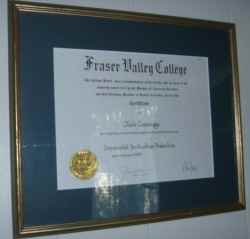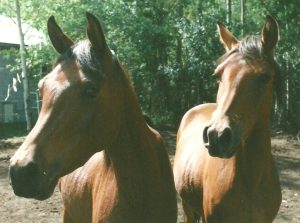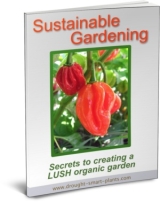About Jacki
Who
is
she?
And why is she so interested in Organic Gardening?
Jacki Cammidge is a participant in the Amazon Services LLC Associates Program, an affiliate advertising program designed to provide a means for sites to earn advertising fees by advertising and linking to amazon.com. Other links on this site may lead to other affiliates that I'm involved with, at no extra cost to you.
Starting in the early to mid 1980’s, growing some children was the top priority in my life.
Moving to acreage in Bradner (Zone 7a on the Canadian Plant Hardiness Map), near Aldergrove British Columbia from an apartment in Coquitlam in 1986 felt like coming home.
Raising kids in a healthy environment, with the fresh vegetables and fruit of the Fraser Valley, I was exposed to my first knowledge of growing organic vegetables.
I stumbled over Rodales Organic Gardening magazine, back when it was in a different format than today, and I was a convert.
The mystical and almost reverent articles about composting, raised beds, cover crops and natural pest control had me hooked.
In my first organic garden endeavor, it became clear that I was seriously over ambitious.
My garden was a huge area with a fifty foot row of established raspberries along the east side of it.
I made raised beds out of whatever lumber I could scrounge, and bought a huge truck load of local mushroom manure.
I was set.
Unfortunately, after the first year, the weeds took over, and I had a great crop of dill, and not much else, and big black slugs.

In 1989, I went to Fraser Valley College in Chilliwack to take Ornamental Horticulture, and that pretty much did in my organic gardening adventure – for a while.
I ended up working in an industry that at that time didn’t really appreciate organic farming methods .
The owners of wholesale nurseries like to produce the biggest and best crops of plants as quickly as possible, which means chemical fertilizers and pesticides – and hang the future!
To their way of thinking, the contamination of the environment isn’t an issue, and water over use is not their problem.
I couldn’t in all conscience follow that philosophy, so in 1992, I moved to the Chilcotin (Zone 2a on the Canadian Plant Hardiness Map), where I had a greenhouse and small nursery to supply locals with a few bedding plants, grown in a season that may be lucky enough to get 30 days in a row without frost.
Tender annual bedding plants could be brought in from other areas, but in most cases were not adapted to the harsh unforgiving climate, strong westerly winds, dry high desert air, and the potential for frost any day of the year.
I developed methods of raising hardy little seedlings using seeds specifically geared towards growing into vegetables that would fruit in a short window of time, and produced later in the season so as to be ready when the short season of frost free days arrived.
Then in 1997 I moved to Dawson Creek (Zone 3 on the Canadian Plant Hardiness Map), much further north.

Oddly, it has a few advantages, even over warmer more southerly climates.
Although the winters are harsh and snowy, with long nights, and very cold temperatures, the summers make up for it.
Although the warmer months are short, the length of daylight is longer than further south.
This phenomenon makes it possible to grow many plants very quickly.
Potatoes and cole crops (cabbage, broccoli, and other Brassicas) love these long days.
Protected from hungry deer and frost, they produce like nowhere else I have ever gardened.
The soil in the Peace Country is a thick layer of clay, the remains of a shallow sea that covered the whole central part of the continent eons ago.
You can’t garden directly in this sticky, heavy, cold soil, so I built raised beds out of salvaged lumber (free), which were lined with lumber wrap (free) and filled with leaves (free), horse manure (free) and well aged sawdust (free), and grew the absolute best peas, broccoli, potatoes and greens ever.
I learned the value of a hot compost pile, building wire bins lined with (you guessed it, lumber wrap!) and filled with wet leaves raked from under the huge old Populus tremuloides, or Trembling Aspens that are endemic to the area, horse manure from my Arab fillies, old sawdust from an now defunct sawmill, and a surprise addition of some moldy chicken feed swept from a feed store, and some rancid flour.
Even in the cold nights when the temperature dropped to -25 Celsius, the piles steamed, and clouds of steam erupted when I stuck in a pitchfork.

This revelation alone was worth it.
I’ve now moved again, this time to more southern climes; to Grand Forks (Zone 5a on the Canadian Plant Hardiness Map) British Columbia, the Kootenay Boundary country, where the winters are snowy but summers are warm and dry.
Adapting my methods yet again, this time I’ve discovered some ways to salvage and utilize a reduced water supply.
This is the limiting factor here, so using drip irrigation, rain water capture and mulching to prevent moisture loss I can produce many plants in this warmer, drier climate.
I still find free stuff to use for my gardening adventures.
I scrounge lumber, plastic, lumber wrap, old carpet, cardboard, leaves, horse manure, grass clippings, old windows, moldy hay bales; whatever I can haul in a pickup.
All the items I find are used in some way to protect plants, cover and smother weeds, make into compost or mulch.
I grow as many tomatoes and peppers as possible, and even though picked when green will store and ripen at room temperature, providing fresh produce until January.
My root cellar, Glory Be, usually has a few bins of potatoes, especially those that will be used for seed in June the following year.
Strings of garlic and onions are stored in the kitchen – don’t let these get cold, as they’ll think they’ve had winter and start to grow.
Other delicious organic vegetables are collards, broccoli,
cabbage, peas, beans and many different summer squash and the longer storing
winter squash. Typically, I can eat right out of the garden from May until September; salads, fresh picked with crunchy new peas, zucchini, herbs, and my favorite, new potatoes, pulled from under the plant, leaving it to grow on and produce more.
I love deepening my knowledge of ways to successfully grow food crops in a cooler climate; even Certified Horticulturists know that the schooling is never done.
Learning from Mother Nature has been a crucial part of my lifelong study of organic gardening.
Find out how I've built five websites with
Solo Build It!

